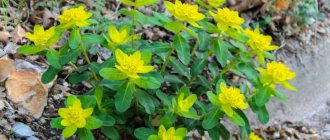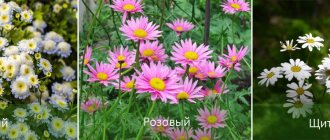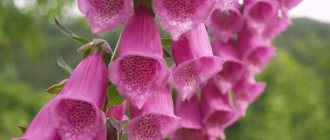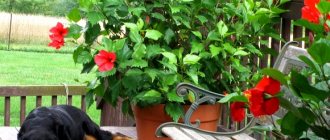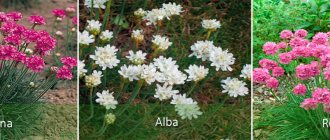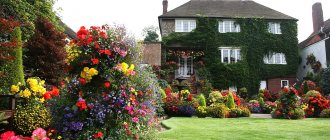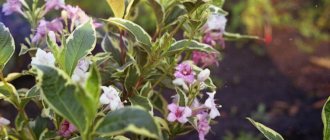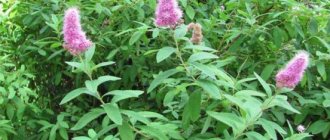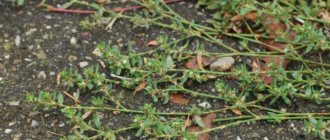Probably, almost every person knows what garden jasmine looks like and what it is. This plant is grown as an indoor plant by a very large number of gardeners. However, it can be grown in open ground. Many gardeners are happy to grow such a spectacular flower on their site. Jasmine bush can easily be confused with mock orange, and although these plants require almost the same care, they differ in appearance and also have significant differences in their origin. Thus, jasmine can be easily distinguished by its fragrant inflorescences, which are quite large in size.
However, in order to grow a spectacular and strong plant, you need to know how to plant it correctly in spring, and you also need to learn the rules for caring for garden jasmine. This kind of jasmine is a very beautiful plant, especially during flowering, when fragrant flowers bloom. But it requires good care, as well as proper planting.
The uniqueness of garden jasmine
During the flowering period, flowers contain a large amount of essential oils, but only in those that have bloomed recently. They have a beneficial effect on human well-being. Benzyl alcohol and jasmine benzyl acetate can normalize human sexual libido. The buds of such a plant are used to make a special decoction that has the ability to normalize the functioning of the digestive organs. Also, the substances contained in garden jasmine can cleanse the body of toxins, as well as strengthen the immune system. Any of the varieties of such jasmine contains substances that have medicinal properties. The jasmine bush will not only become a magnificent decoration for your garden, but can also significantly improve your health.
In order for cultivation to be successful, you need to know at what time and how exactly to plant this flower in open ground.
Main views with photos
Some species are the most popular among gardeners and summer residents.
Small-leaved jasmine
This is a fairly compact shrub that almost never reaches more than 100 centimeters in height. This plant has leaf blades that are quite large and curved. Its flowers have a very pleasant smell, reminiscent of strawberries.
Common crown jasmine
The shrub is quite large in size. So, it can reach a height of 250 to 300 centimeters. During the flowering period, such a jasmine bush is decorated with very large and beautiful inflorescences, which emit a pleasant sweetish smell. The leaf blades are painted a rich golden color.
Jasmine fluffy
This plant is recommended to be grown in parks or in fairly large areas. The bush can reach a height of 400 centimeters, and this is the tallest plant of all types of jasmine. However, the peculiarity of this plant is that its lovely flowers have no aroma. This species blooms quite late. Flowering lasts for 4 weeks.
Also very popular is the jasmine variety “Ermine Mantle”. This plant is quite compact and its height does not exceed 100 centimeters. Inflorescences are located along the entire length of the branches. Flowering lasts about 8 weeks.
Types of terry jasmine
Today, thanks to the work of breeders, there are sixty species of garden jasmine. Not all species can boast of double flowers, but each of them has a lot of its own advantages. The aroma of non-double flowers is reminiscent of the smell of real jasmine. Terry varieties of mock orange have a barely perceptible odor, completely different from the aroma of real jasmine.
Terry varieties include:
- Virginal. A shrub reaching a height of three meters. The flowers are white, with a sharp sweet aroma, five centimeters in diameter. Repeated flowering is possible in autumn, but much weaker than in summer.
- Glacier. Large fragrant flowers are collected in numerous inflorescences on stems reaching one and a half meters in length. It blooms very beautifully. But faded inflorescences should be removed independently due to their unsightly appearance.
- Anshantman. A late-blooming shrub with the most beautiful flowers of all European double varieties.
- Pyramid. Late-flowering variety up to three meters high. Large snow-white flowers with a subtle aroma.
- Guirandole. A drooping shrub with a diameter of about one and a half meters with double cream flowers of a slight aroma.
- Schneesturm. White double flowers with a fruity aroma on drooping shoots reaching a height of three meters. Fast growing shrub.
- Ermine robe. A low shrub with creamy-white double flowers and a subtle strawberry aroma. Surpasses all other varieties in terms of flowering time.
- Arctic. A variety of Russian selection. A low shrub with graceful small flowers. The aroma is weak.
- Ballet of moths. Russian variety, reaching a height of one and a half meters. Snow-white double flowers resemble the wings of moths.
- Blizzard. A variety of Russian selection. The low shrub is distinguished by amazing double flowers, similar to snowflakes, covering all the foliage. Abundantly flowering.
- Yunnat. A popular Russian variety with very large double flowers that smell strongly of strawberries.
It is better to breed varieties of Russian selection. Those brought from Europe are weakly resistant to the peculiarities of the Russian winter.
Choosing a suitable landing site
These species and varieties can be found in many gardens and summer cottages. As a rule, garden jasmine is planted in open ground in the spring. In order for the plant to grow and develop normally, you need to know several important rules for both planting and caring for it. As a rule, planting different types and varieties of garden jasmine is practically no different.
Key points in choosing a suitable landing site:
- When choosing a suitable place on the site for this plant, you should definitely take into account the fact that it can adapt to almost any weather conditions. However, if you want your plant to have a spectacular appearance and bloom very profusely, then it should be planted in a place that is protected from strong drafts. The fact is that they have an extremely negative effect on this shrub. Also, garden jasmine grows and develops better in a well-lit place with enough direct sunlight.
- This shrub is recommended to be planted in close proximity to flowers that have a purple or deep blue color tint. For example, it will look great next to delphinium or lavender. Jasmine also grows well next to hydrangea or spirea.
- Experts advise planting garden jasmine in the spring. However, this procedure can be carried out in the fall.
Planting in open ground
The health of the plant and the flowering period depend on the correct planting of terry jasmine. It is enough to follow simple rules to enjoy the unobtrusive aroma of an attractive shrub in the summer. Even a beginner in the world of gardening can grow an attractive shrub.
Selecting a location
Tulip geranium - popular varieties for the home
Double jasmine loves diffused light. It is necessary to protect the shrub from the scorching rays of the sun by planting it near the house or in the shade of trees.
Note! Diffused lighting is necessary for abundant flowering. The more sun the plant receives, the larger the buds are set.
Preparing the soil and flower
To wait for flowering and not damage the jasmine, planting and care in open ground require compliance with a number of rules. The main thing to remember is that the plant needs fertile soil, and you need to avoid stagnation of liquid at the roots.
It is recommended to plant the shrub in early spring, before the buds open. Then the jasmine will have time to take root and delight gardeners with abundant flowering.
To protect against groundwater, drainage is used:
- broken brick;
- pebbles;
- sand;
- crushed stone
Materials must be laid in a layer at least 15 centimeters high. It is easier to plant the plant on a hill, then the root system will not require additional protection.
Note! Cuttings for planting are selected about 12 centimeters long. They must be flexible and not break when bent into a ring. The lower leaves on the branches are torn off.
Steps to take when planting garden jasmine:
- Dig a hole 55-60 centimeters deep.
- Prepare the soil by adding humus. It should make up a third of the soil. Add mineral fertilizer containing nitrogen, phosphorus, potassium - nitrophoska.
- When planting a seedling, smooth out the roots.
- Cover with soil and water generously.
- When the water is absorbed, lay peat on the top layer of soil, this will reduce the evaporation of moisture.
Selecting the optimal soil and planting
Garden jasmine, as mentioned above, is a fairly unpretentious plant. But for its best growth, you should pay more attention to the choice of soil, as well as to its immediate planting.
- Due to its unpretentiousness, such a shrub is able to take root and grow well in almost any soil. However, whenever possible, preference should be given to soil rich in nutrients. It should be remembered that jasmine roots react extremely negatively to excessive humidity, so the choice should be left on a piece of land located at a not very high elevation.
- Sand mixed with small stones should be poured into the hole prepared for planting. This layer will act as drainage. When planting a plant in spring, it is recommended to pour nitrophosphate in the amount of 50 grams into the hole. This will allow the plant to quickly take root in its new location.
- When the bush is planted, the soil will need to be compacted a little. Then the jasmine needs to be watered.
- In order for the plant to develop correctly, it is necessary to systematically add fertilizer to the soil.
Feeding rules
In order for your site to be decorated with a lush jasmine bush, you not only need to regularly care for it, but also systematically add fertilizer to the soil. It should be remembered that the very first fertilizing should be done only 12 months after planting the plant in open ground.
Garden jasmine needs minerals. To feed the plant, it is recommended to use a nutrient solution consisting of 1 liter of water and 5 grams of superphosphate. Add another 2.5 grams of urea and potassium sulphide into the resulting solution. After this, the solution is thoroughly mixed. It is used to fertilize this shrub.
Garden jasmine also needs organic fertilizers. So, it is recommended to use manure and humus for feeding. But it should be remembered that manure for feeding should be used only in diluted form, otherwise the plant’s root system may burn. It is recommended to dissolve manure in water in a ratio of 1:15.
Growing problems, diseases and pests
Double jasmine is a plant resistant to weather conditions and pests. Aphids and spider mites pose a danger to it.
To combat pests, use laundry soap. It is ground on a grater and dissolved in a bucket of water.
Attention! The use of the solution will get rid of pests and serve as the prevention of infectious diseases.
Double jasmine is a shrub characterized by its unpretentious nature and abundant flowering. You don't need to spend a lot of time and effort to care for it. The pleasant aroma emitted by numerous flowers will serve as a reward for abundant watering and timely feeding.
Trimming Features
In order for the jasmine bush to be lush and fragrant, fertilizing alone is not enough; it also needs to be properly cared for.
In order for the crown to always look well-groomed and impressive, regular formative pruning should be carried out. Both summer residents and gardeners have several secrets and rules regarding this procedure:
- formative pruning must be carried out in spring, when the shrub is in a vegetative state;
- the longest branches need to be cut off completely, and short ones should be shortened by ½ part;
- for more abundant flowering, rejuvenating pruning is carried out, or rather, all empty branches are removed;
- in an adult bush, the central trunk needs to be cut to 45–50 centimeters, while the rest are removed entirely.
Every year it is necessary to inspect the bush and remove damaged and diseased branches.
Preparing for winter
In order for the plant not to die in winter, it must be properly prepared for this difficult period. To do this, you need to perform a few very simple manipulations:
- It should be remembered that adult specimens are more frost-resistant than young ones. Therefore, it is quite possible not to prepare adult plants for the winter period. However, those jasmines that are still quite young need this procedure.
- When the bush fades, it should be wrapped in material specially designed for this. You can also use regular straw for this purpose.
- To prevent jasmine roots from being damaged during the winter cold, in the autumn you need to dig up the soil around the trunk and do not forget to add compost to it.
- If desired, this shrub can be transplanted to a new place in the spring.
Reproduction methods
It is very easy to propagate garden jasmine. So, there are several ways:
- Seeds. Seeds are sown both in open ground and in a box at home (growing through seedlings).
- Cuttings. It is recommended to cut cuttings in the first days of June. They are then planted either in open soil or in a greenhouse.
- Escape. In spring, shoots should be prepared by separating them from the mother plant. The choice should be made on the strongest shoots. After they overwinter, with the onset of spring they are transplanted to a permanent place.
- Dividing the root system. This is not the most popular method of reproduction. It is recommended to divide in the autumn.
You should also be sure to remember that indoor and garden jasmine are different crops, and each of them requires special care.
Loading…
Methods for propagating terry jasmine
There are several ways to propagate double jasmine. The simplest of them is the use of layering, the most labor-intensive is the use of seeds.
Seeds
Terry jasmine seeds will appear after it reaches 7 years. Only then does the bush begin to bloom.
The seeds are placed in prepared holes, sprinkled with soil and covered. The procedure is recommended to be carried out in winter, and you can protect it from the cold with spruce branches. Melting snow in the spring will give the seeds the necessary moisture and the first shoots will appear with the spring sun.
By layering
To propagate jasmine by layering, perform the following steps:
- The shoot is tied with wire and bent to the ground where the bud is located. It is better to place the branch in the prepared groove.
- Sprinkle with a mixture of peat and sand and wait for rooting.
Cuttings
To propagate terry jasmine, young shoots and cuttings harvested in the fall are used.
Green branches are planted in early June, creating greenhouse conditions. You can simply cover the seedlings with glass jars. When treated with a growth stimulating agent, rooting will be faster and more effective.
Autumn cuttings taken after the flowering period are planted in sand in the winter, and in the spring they are moved to greenhouses so that they can take root.
Double jasmine cuttings
Dividing the bush
When propagated by division, the bush is divided into several parts, usually 2-3. This must be done carefully so as not to damage the jasmine roots. Damaged and rotten parts of the plant are removed.
The resulting new shrubs are planted in prepared holes and watered abundantly.


